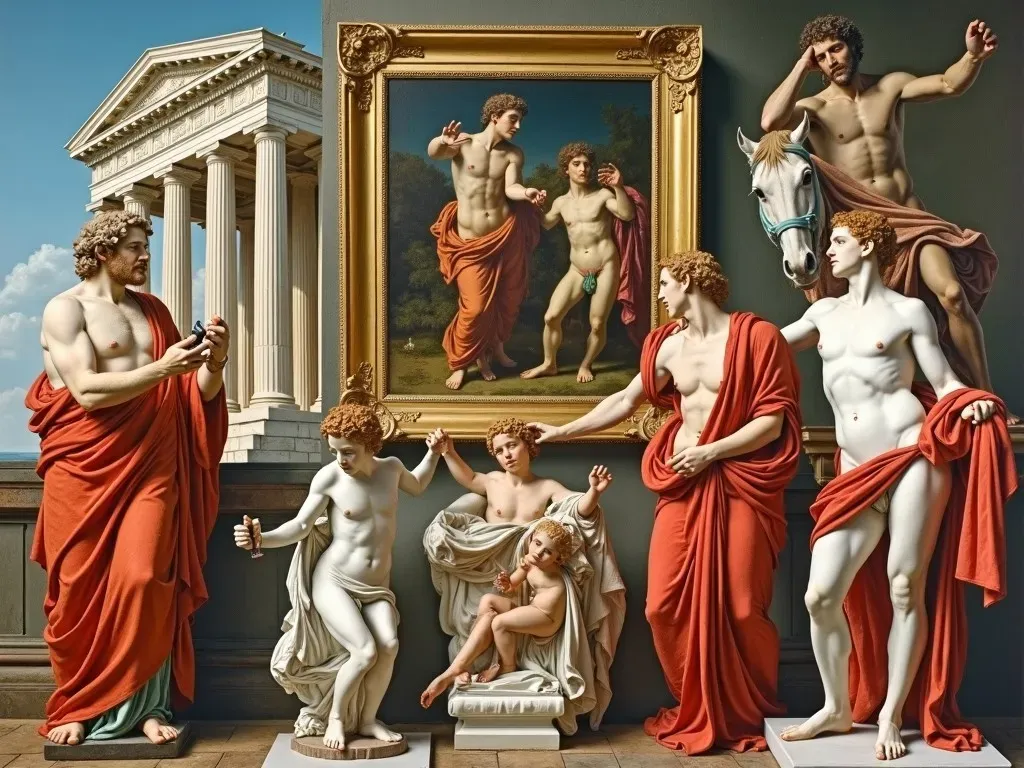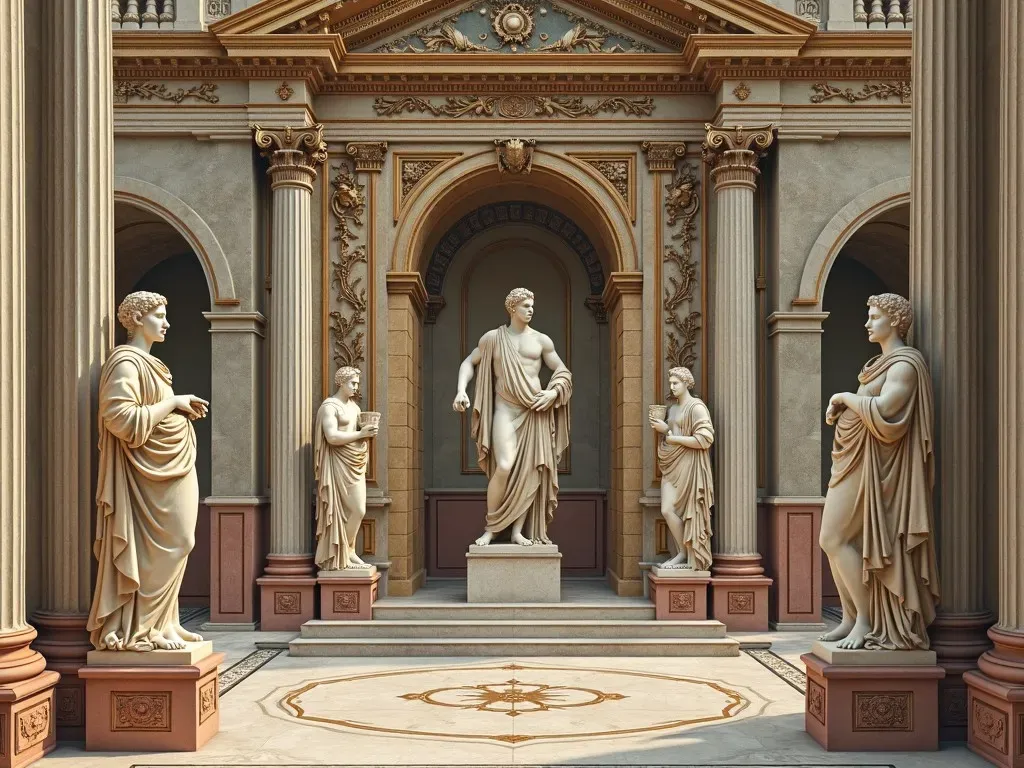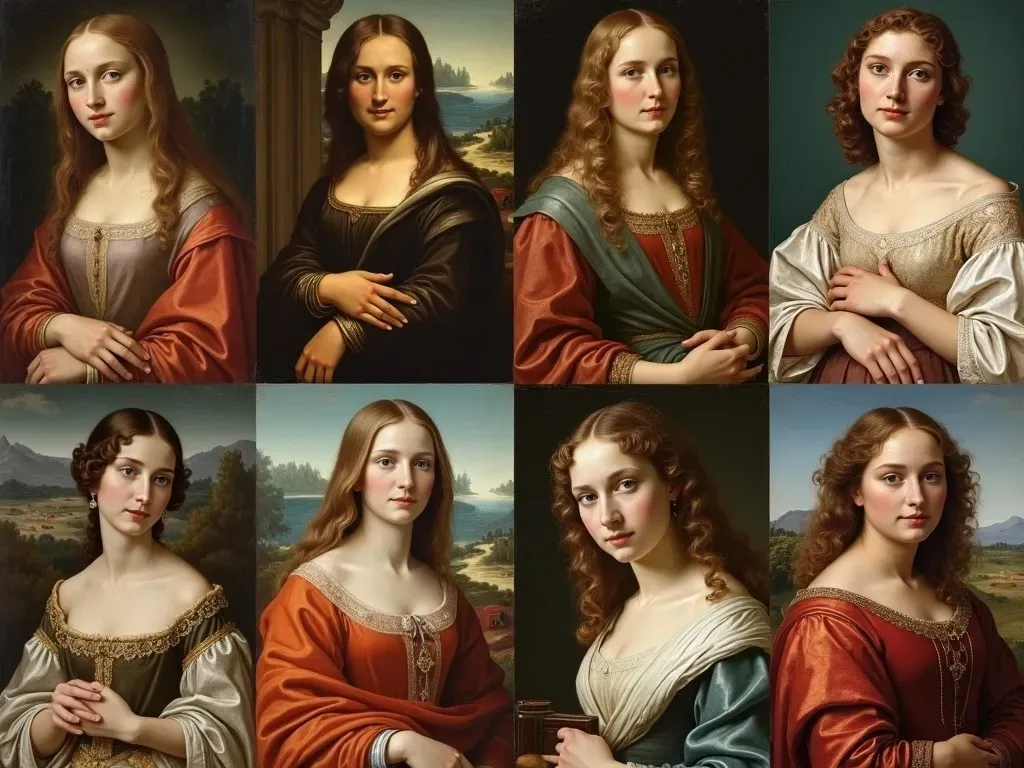The classical art period encompasses a rich tapestry of artists who drew Inspiration from the achievements of ancient Greece and Rome. This era, marked by the remarkable characteristics of classicism, urges a closer inspection of the prominent figures who shaped Western art through their dedication to realism, balance, and harmony in their works.
Understanding Classical Art
The classical art period, largely characterized by classicism, flourished notably during the Renaissance, spanning the 15th to the 17th centuries. Artists sought to revive the visual styles and motifs of Greco-Roman antiquity. This creative resurgence embraced a multitude of forms, including painting, sculpture, and architecture, aiming to encapsulate the beauty, symmetry, and intellectual depth reflective of ancient civilizations.

Prominent Artists of the Classical Period
Several key artists emerged during this influential phase, leaving indelible marks not only on their contemporaries but also on generations to come. Below is a table highlighting some prominent classical art period artists and their contributions:
| Artist | Notable Works | Contribution to Classical Art |
|---|---|---|
| Leonardo da Vinci | Mona Lisa, The Last Supper | Mastery of realism and emotional depth |
| Michelangelo Buonarroti | David, The Creation of Adam | Innovative sculpture and fresco Techniques |
| Raphael Sanzio | The School of Athens, Sistine Madonna | Harmonious composition and graceful figures |
| Titian | Venus of Urbino, Assumption of the Virgin | Use of color and light |
| Sandro Botticelli | The Birth of Venus, Primavera | Fluid forms and mythological themes |
The depth of their works transcended mere representation; they imbued their pieces with philosophical and emotional narratives, thereby redefining the role of the artist in society.
Features of Classical Art
Classical art is recognized for its distinctive features that echo both ancient methodologies and innovative developments. Below are some key characteristics:
- Realism and Humanism: A significant move toward naturalism, depicting human figures with anatomical precision.
- Proportion and Symmetry: Emphasis on balance, particularly in the human form.
- Mythological Themes: Frequent incorporation of Greek and Roman myths, serving as allegories for human experience.
- Idealization: Representation of subjects in a perfected manner, often depicting beauty and virtue.
- Use of Perspective: Development of linear perspective, enhancing depth in paintings.
Facts and Figures
The influence of classical art can be measured not just in the artworks themselves, but through the rebirth of those ideas and styles in successive art movements. Here are some interesting historical facts:
- The Renaissance marked a total revival of classical ideals, shifting from the medieval styles that preceded it.
- The term "Renaissance" itself means "rebirth," reflecting the revival of interest in classical antiquity.
- World-renowned institutions, such as The Metropolitan Museum of Art, house extensive collections showcasing classical artworks.

Noteworthy Classical Artworks
Indeed, the classical art period produced numerous masterpieces that are still revered today. Below is a list of some hallmark examples of classical artwork to illustrate this tradition further:
- The School of Athens by Raphael: A fresco showcasing great thinkers like Plato and Aristotle, emphasizing intellectual pursuits.
- The David by Michelangelo: A monumental marble sculpture representing the biblical figure with intricate anatomical details.
- The Birth of Venus by Botticelli: A painting that encapsulated the idealized beauty and flowing forms characteristic of classical themes.
Each of these works not only highlights the artistic techniques of the time but also reflects the profound cultural and philosophical ideas that fueled the revival of classical thought.
FAQs
Q1: What defines classical art?
A: Classical art is characterized by its emphasis on harmony, balance, and proportion, drawing heavily from the aesthetics and ideals of ancient Greece and Rome.
Q2: Which artists are associated with the classical period?
A: Key artists include Leonardo da Vinci, Michelangelo, Raphael, Titian, and Botticelli, among others.
Q3: How did classical art influence later art movements?
A: The principles of realism and humanism established in classical art laid the foundation for various subsequent art movements, including the Baroque and Neoclassical styles.
Q4: What are some famous artworks from the classical period?
A: Some renowned works include Michelangelo’s David, Leonardo da Vinci’s Mona Lisa, and Raphael’s The School of Athens.
Q5: Where can I find more information about classical art?
For a comprehensive exploration of classical art, you can refer to The Art Story and numerous other art history resources.

Conclusion
Throughout the classical art period, artists not only employed techniques of ancient tradition but invigorated them with contemporary themes and narratives. The legacy of these classical artists continues to resonate within modern practices, emphasizing the timeless appreciation of beauty and intellect rooted in the classics. Their masterpieces inspire and inform both aspiring and established artists, ensuring that the essence of classical art remains ever-present in today’s artistic landscape.
This artistic lineage exemplifies how human creativity can strike a harmonious balance between historical reverence and contemporary expression, making classical art a perpetual source of inspiration.
